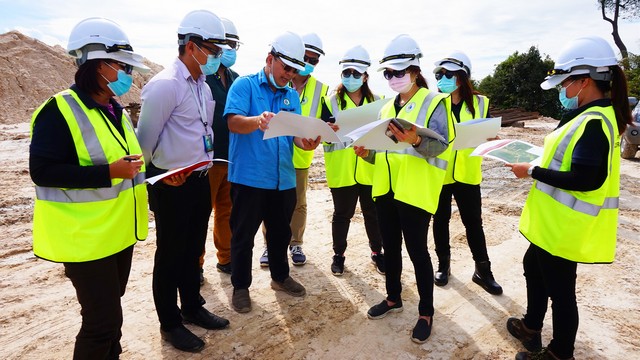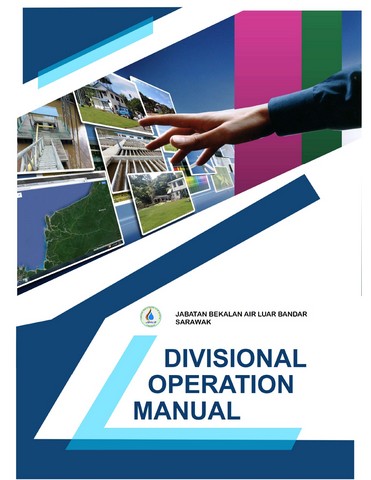During the Dewan Undangan Negeri (DUN) sitting in November 2022, Minister for Utility and Telecommunication YB Datuk Haji Julaihi bin Haji Narawi spoke of the progress of efforts to establish a “One Entity and State Water Authority as a Corporate Body”.
He said that the Ministry of Utility and Telecommunication Sarawak had formed steering and technical committees to analyse and scrutinise the results of the detailed study on the formation, as well as to further assess a suitable model for it to be carried out.
“This initiative is in line with the direction of the water industry transformation under Post-COVID-19 Development Strategy (PCDS) 2030 to enhance the effectiveness and efficiency of water resource management and water supply services in the future,” he explained.
This update is reaffirmed by the director of Jabatan Bekalan Air Luar Bandar (JBALB) Ir Chang Kuet Shian, stating that the ministry is given two years to merge the present four water supply agencies – JBALB, Kuching Water Board, Sibu Water Board and LAKU Management Sdn Bhd – into one.

“For the water grid (in Sarawak) to work, it has to have one entity,” he says in an interview with RAKAN Sarawak, adding that this rather demanding endeavour requires taking account of various factors that include the finance and capacity to implement projects, and the social impact on the entity’s human resource.
In essence, it is part of the Sarawak Government’s drive to provide water supply to all households across Sarawak.
Up to the second quarter of 2022, the overall water supply coverage in the State is 83.7 per cent, with 99 per cent in urban areas and 67.2 per cent in rural areas.
To ensure that every rural household can enjoy safe reliable water supply by 2030, 128 projects proposed under the 12th Malaysia Plan are to be carried out from 2023 onwards; 98 of which are under the purview of JBALB.

According to Ir Chang, project implementation under the department is based on the Sarawak Water Supply and Water Grid Master Plan, which has been executed for the past years.
The plan is the Government’s holistic approach to developing raw and treated water facilities sustainably, providing a roadmap for the short term (up to 2025), medium term (until 2040) and long term (up to 2070) to expand water supply coverage and guarantee water supply provision in the long run in Sarawak.

Its fundamental objective is to establish a water grid system comprising the development of raw water resources, water treatment and distribution. It also will connect all major plants across the State and form a continuous water grid.
“Unlike most master plans, we (the Government) studied and worked together with the consultant to form this master plan, so we ourselves can understand it as if it is ours.
“This is the first time – at least in my many years of working in this field – that a master plan is already put into use while it is being developed,” comments Ir Chang.
Strengthening Capability and Governance in Project Implementation
JBALB has come a long way since it was established in August 2015.
As Ir Chang recounts it, in its initial years, there was no specific plan (until the Sarawak Water Supply and Water Grid Master Plan) to guide the department through, little resources such as human capital for it to operate effectively, and a lack of experience to carry out water supply-related projects.

Today, the department has grown to become more stable and systematic in its management and operation.
Particularly in project implementation, it has been emphasising on constant cooperation with project consultants and contractors, as well as depending on news outlets not only to disseminate information on its activities, but also take note of challenges affecting the public that are connected to its services.

Within the organisation, JBALB has developed a series of manuals that are used as references for existing personnel and part of the orientation process for new ones: the Branch Operation Manual, the Regional Operation Manual, the Divisional Operation Manual, and the Technical Requirement Manual.
Ir Chang reveals that the Technical Requirement Manual is expected to be launched in 2023. It describes specifications of projects under its purview for contractors to follow.

The notion of sharing these information – the result of years of experiencing and learning from problems faced during projects – is deemed “noble” by consultants the director had spoken to.
“There may be other guidelines similar to this manual, but they may not be applicable to Sarawak’s environment,” he adds.
Strong governance is also key in carrying out projects. To achieve this, Ir Chang states that the department forms committees in every step of the project implementation – such as evaluation and even termination – to empower officers to make decisions for the organisation, and more importantly, to avoid delays in projects, which is very likely to occur if only one person calls the shot.
One example is the Safety and Health Committee, which oversees occupational safety and health (OSH) of a project and ensures that contractors comply to OSH-related requirements. For instance, projects costing above RM20 million will necessitate a safety officer, whereas those below RM20 million will entail a site safety officer.
“We also encourage our staff to go for safety courses for them to be more aware of and understand the importance of OSH.
“Safety is your own responsibility. If you don’t consider that and you blame the management, it’s not fair. As someone with this knowledge or qualification, you have to ensure that on site, everybody understands,” Ir Chang says.
References:
Ten, M. (2022, November 29). Water supply coverage in Sarawak at 83.7 pct, says Minister. The Borneo Post. https://www.theborneopost.com/2022/11/29/julaihi-water-supply-coverage-in-sarawak-at-83-7-pct/
Sarawak Water Supply Grid Masterplan expected to start next year. (2020, February 5). Dayak Daily. https://dayakdaily.com/sarawak-water-supply-grid-masterplan-expected-to-start-next-year/




